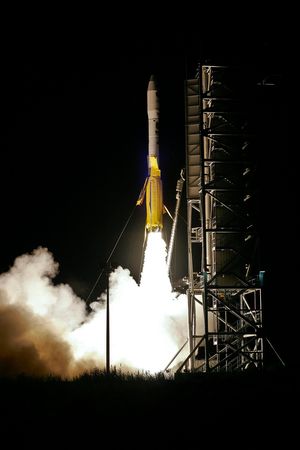Lately I’ve been taking my habits with me everywhere, and that includes vacation. I was in Paris for a wedding this summer and while I did see the sights, the way I spent my time was very different from my peers. I started my mornings with the same yoga practice I have here in Austin, and ended every day with my daily reading.
I can see a world where vacations are about maximizing sights to see and embracing as much of the locale as possible. But to me, downtime can be a part of devotion to broader goals. To be truly devotional to anything, be that your own curiosity as a student, or your own vitality in the form of working out, means to show up every day; good days, bad days, weekends, and vacations.
For the second week in a row, the most clicked link from last week's issue (2% of opens) was the Wikipedia list of different shot glass standards. In the Members' Slack we've been talking about Vevor Tools, which seems to have shot from nothing a few years ago to now selling a huge variety of "basic hand tools" with "extraordinary ability" 🤔
PLANNING & STRATEGY.
- If the container holding your nuclear waste was cracked, you’d probably want to either transfer the waste into a new container (which would be annoying) or repair the crack (which is hard). One way to repair cracks in metal containers is to weld them, but that has a couple of downsides: For one, welding something that has nuclear waste inside it can go bad really quickly, and for two, the heat involved in welding tends to degrade the metal’s mechanical properties (strength, ductility, etc.), which can lead to problems down the line.
So the Hanford Nuclear Site has been looking into cold spraying for nonstructural crack repair. In cold spraying, powdered metal is sprayed, almost like paint, at an existing metal part. When the powder hits the part it fuses to its surface, making it thicker; in this respect you could say that cold spraying falls into the (annoyingly vague) category of “3D printing” technologies. Unlike most 3D printing methods, though, one of the big advantages of cold spraying is that the metal doesn’t heat up, meaning there is no loss of mechanical properties. I originally became interested in cold spraying as a way to create a rough surface finish on metallic parts; cold sprayed parts tend to have a sandy texture, due to the spatter from the spray. The reason for wanting that surface finish was to improve adhesion when bonding metallic to non-metallic parts. However, the cold spray ended up being quite costly, and there were other ways to create that same surface finish. - Sandwich structures look, as their name suggests, like sandwiches; they have a center core between two thin face sheets. They tend to be both lightweight and stiff, and are used in all sorts of contexts, from packaging (corrugated cardboard is a sandwich structure) to arts and crafts (foam core board is a sandwich structure) to aerospace. In my time working on aircraft and rockets, I’ve seen a lot of sandwich structures made of carbon composite face sheets and aluminum honeycomb cores. They are used in aircraft flaps and panels, and tend to be cheaper and lighter than solid carbon composites or metals. But they are not without their downsides. Their aluminum honeycomb cores expand a lot at extreme temperatures (aluminum has a high coefficient of thermal expansion, or CTE), whereas carbon composites tend not to; this produces stress on the sandwich structure and can lead to failure. In addition, air is often trapped inside the aluminum honeycomb, which can then fail catastrophically if the sandwich structure is sent to space.
Carbon honeycomb cores are far less common than aluminum, and they have their benefits. Because the core and the face sheets are made of the same material, they’ll expand and contract as a single structure when heated and cooled. In addition, carbon honeycombs are offered in vented varieties, meaning that the air inside the honeycomb chambers is allowed to escape. This product sheet by Eurocomposites shows a comparison between different core materials, with images of the vent designs and a few of the shapes that sandwich structures can be formed into.
MAKING & MANUFACTURING.
The company I work for makes a lot of large composite parts through a process called hand layup. In hand layup, pieces of fabric or bundles of fiber (called "tows") are placed by hand onto a substrate, tool, or mold. The material may be highly engineered (like carbon fiber or aramid) or naturally occurring (like hemp), and is placed carefully, with its fibers oriented to achieve specific design goals. After hand layup, the part is cured and then finished.
Our composite parts are typically laid up on a tool, and choosing a tool material is surprisingly nontrivial. Carbon fiber composites have low coefficients of thermal expansion, and we typically cure our parts in an oven. When we make tools out of aluminum, for instance, the tool expands in the oven and imparts stress in the part. Sometimes that thermal stress is acceptable, but other times it is desirable to make tools out of a nickel-iron alloy called invar, named due its low coefficient of thermal expansion (and thus its invariability). But for large parts, metal tools (be they invar or aluminum) can be cost prohibitive. Instead, we might choose a tool made of foam. Corintho is a high density polyurethane foam that has a CTE similar to many carbon fiber laminates. This study examines using it as a low cost carbon layup tool.
For parts with complex geometry, it can be very difficult to separate them from their molds. Smart Tooling is a company that makes molds that shrink when they’re heated. After the part is cured, the entire thing (the part and its mold) is reheated; the mold contracts and can be snaked out before being reused.
MAINTENANCE, REPAIR & OPERATIONS.
- Malayalam is an Indian language, spoken by over 34 million people, which is closely related to Tamil. Malayalam’s written script looks quite different from many other Indian languages – it’s really curvy, and to me, it’s extremely beautiful. It turns out, the origin of the curved letters comes from the material it was originally written on: palm leaves. Straight letters would damage a palm leaf, and so the aesthetics of the written language adapted – and have stuck around. There have been some changes to the script since the introduction of typewriters, but it largely has remained curvy.
- The FAA really cares whether airplanes are able to safely reach their intended destinations. When you’re developing commercial airplanes (as I did, while working at Boeing, for a few years), the FAA is highly involved in the design and engineering process, via designated engineering representatives and engineering unit members. When I moved to working on rockets, I honestly didn’t expect any involvement from regulatory agencies. But as this blog post explains, it turns out that the FAA is focused on ensuring rockets don’t blow up near people or fall on someone’s home – and don’t care nearly as much about ensuring a rocket will reach its intended destination.
DISTRIBUTION & LOGISTICS.
- It’s surprisingly common for beaches to import sand.
- A fun overview on the history of copper mining. Copper mining prominently involves exploding chunks of ore that are then post-processed in a fluid, forcing any copper particulate to float to the surface.
INSPECTION, TESTING & ANALYSIS.
- On liquid-fueled rockets, it’s actually very complex to figure out how much fuel you have in a tank; the liquid tends to slosh around and sometimes has thermal effects, making its level difficult to measure. Turns out, the same problem exists on the ground for people who have wells. A stilling well is a chamber that dampens turbulence in a container, allowing for its level to be measured accurately. Some liquid fueled rockets use similar features to track fuel on board.
- Space-Track.org is an online database for information on satellite locations and operations.
SCOPE CREEP.
- This episode of the Acquired podcast shares fascinating stories about the history of Lockheed Martin. Some stand-out points include how aggressive timelines led the aircraft manufacturer to buy engines instead of developing their own; how intertwined the stories of Douglas (now a part of Boeing) and Northrop Grumman’s are to Lockheed’s; and Lockheed Missile Systems’s role in Silicon Valley.
- Firefly Aerospace, my employer, recently set a responsive-launch record – sending a payload to space just twenty-seven hours after being asked to do so (the previous record was twenty-one days). I sat on console to monitor data for this flight, and to me the whole experience was indicative of the speed at which the space industry will operate in the future – really fast.
Thanks as always to Scope of Work’s Members and Supporters for making this newsletter possible. Thanks also to Sasha, Sapna, Dani, Aditya, and Faizan for the support in my writing journey.
Love, Amreeta
p.s. - It’s a goal of mine to learn seven different Indian languages in the next three years. Got any fun resources or have any interest in being my practice buddy? Let me know!
p.p.s. - We care about inclusivity. Here’s what we’re doing about it.




